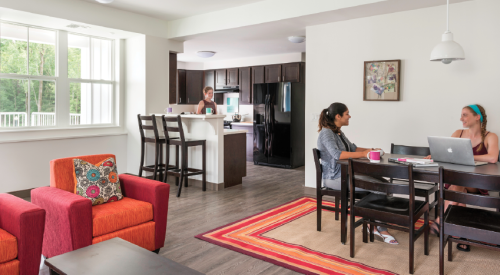Builders are used to targeting Baby Boomers, and much of the recovery in home building has been the result of that generation buying upscale move-up and move-down homes. Although the population of Millennials—people born between the early 1980s and 2000—is larger than the Boomer group, they’re mostly renting, so builders’ experience with this market segment is relatively shallow. However, as a result of building and renting multifamily apartments, MBK Homes is gleaning insights into what matters for young adults.
Residential Products Online content is now on probuilder.com! Same great products coverage, now all in one place!
“One of the oddities of that segment is it has the lowest marriage rate since they began keeping records,” says Tim Kane, president of MBK Homes, which had launched MBK Rental Living by 2012. “They’re getting married later and buying houses later in life, so we’re learning things from the apartment business about them.”
For example, when hiring sales agents, one skill set that MBK now looks for in candidates is being adept at publishing blogs, updating social media pages, and creating an online community. When a potential buyer or renter in that age group submits a query through Facebook or Twitter, the builder knows that the agent must respond within 15 minutes or else that potential customer will move on.
Because this generation tends to own pets, MBK equipped its apartment complexes with pet-washing stations, a feature that the builder is looking to incorporate in its single-family homes along with pet doors and other ways to accommodate animals. Millennials like to use the Internet to shop, and MBK found that its agents were spending more time accepting deliveries. So the builder’s latest apartment projects include lockers with keyless locks for UPS, Fed Ex, and U.S. Postal Service deliveries. When packages arrive, an email is automatically sent to the recipient with a code for unlocking the door. The company is looking into including a similar feature for houses, as well as using electronic devices to personalize doorbells, entryways, and automated controls for mechanicals, appliances, and lighting that homeowners can program and control via the Internet.
“Just being able to interact with that renter and being able to see what was important to them gives us a huge step up against our competition with first-time buyers,” Kane says, “particularly in that age group.”
PB Topical Ref













